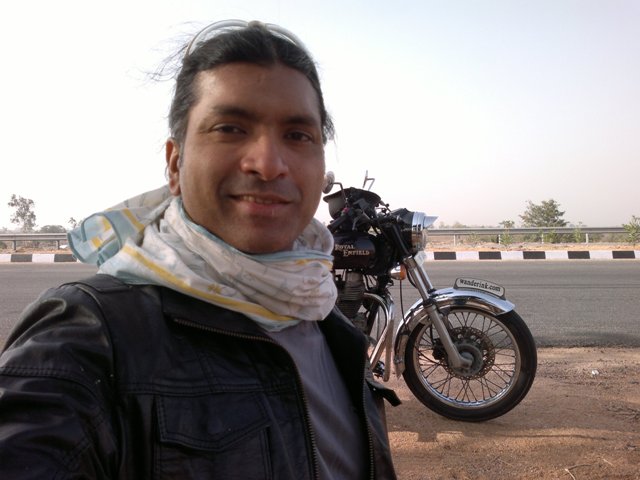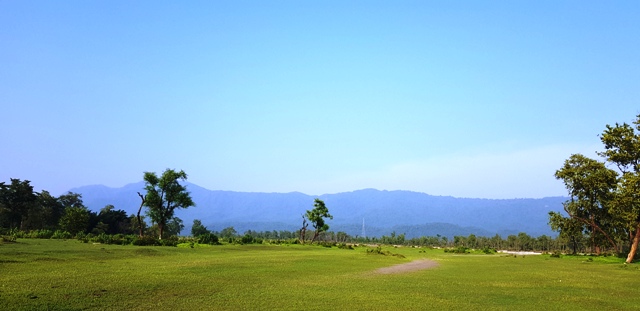The Gangaur Ghat rose resplendent in the path of the sun. The waters of the Lake Pichola on whose banks it loomed stood still awed by the grandeur that surrounded it – and in its midst. Pigeons cooed gratitude for tourists strewing popcorn, rising shortly in hordes indulging the Instagrammers among them. A gaggle of old ladies sat on the steps, pallus covering their faces, getting ready for the evening arti or prayers with lit lamps. Tourists and local vendors swarmed the landing, the latter with their portable vending stands and cries promising freshness and hotness. One lad in snazzy jeans with embroidered seams approached me and enquired whether I wanted to see magic; I had already seen him make rose bushes appear and vanish in front of a tourist group. To tease me he kept producing coins out of most of his uncovered body orifices; large currency denominations and I would have seriously mulled an alliance.
Just a while ago I had checked into a hotel nearby after motorcycling 700 kilometres from Delhi and scrambled towards the Ghat in time to catch the sunset. Riots had broken out in the national capital bringing things to a complete halt. Cops played mute spectators – and thereby perpetrators – even as a pogrom ensued and politicians, instead of swinging into action, any action, prayed haplessly for divine intervention. Even though I stayed in an unaffected neighbourhood, the havoc and ruination that welled up from the less fortunate suburbs pushed me out. Nothing cleared your head like the open roads and the unfettered views they accorded. Riding – and riding fast – left little room for despairing thoughts.
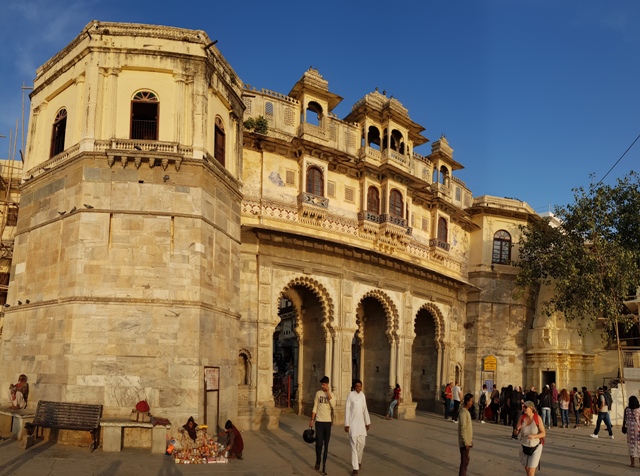
Thick fog crept into the highway from the condemned fields around Rewari, so thick that my jeans got soggy, my knees jarred in the cold and my teeth ground. Visibility was strained, slowing me down considerably. Small vans passed me with people inside huddled like wholesale clothes in a discount store. One or two caught my eyes and I wondered whether they were refugees from places they called home, earned a living, brought up kids, went shopping, cooked, gossiped and saw dreams. That evening while waiting for my dinner at the terrace restaurant of the hotel, I sent a casual selfie to a friend. In the backdrop was the splendid 400-year-old Jagdish Temple. Powerful lights flooded the 32 marble steps with aluminium railings that devotees were taking even at the late hour. Her reply, a benign, affectionate admonition, only served to reaffirm my faith in getting out:
‘It’s been such a dark day in Delhi – I am ready to shoot all gods. And here you are sitting peacefully like a little beautiful child in front of all places a temple.’
Within the temple precincts Garuda stood ready to flap out his wings and fly away anytime his master Lord Vishnu felt like taking off.
Well, at least I wasn’t alone in this desire to get out and away from it all.
***
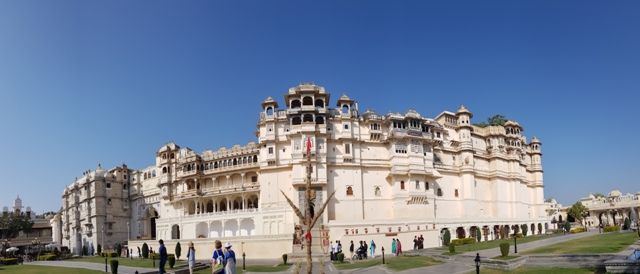
A bluebird day broke early and I dragged my brittle back out of a large canopied bed with satin curtains that could do with a washing. At breakfast I engaged in some harmless sprunting with the coquettish waitress, a big boned woman with muscular legs and picture window eyes, a civil services aspirant who turned out to be the haveli-turned-hotel owner’s wife. She was making notes along the margins of a thick, blue-covered book when I walked in. After delivering my order to the cook, she sat at my table and charted an itinerary for me – most of the sights were within walking distance along one or two of the lanes that radiated from the junction where the hotel stood.
Following her instructions, I first went up a twisting stairway of rusted steel and stood atop a water tank looking at the city that lay towards the southernmost part of Rajasthan bordering Gujarat where I was headed to. The Aravalli mountain range stood in the way of the Thar Desert and the city and even then dust storms and simooms were common. I spotted a twisting funnel hanging in the air not far away. The sand-coloured forts and rufous havelis made an otherwise hazy, bonewhite view bearable, ponderable even. Just as the imposing, rocket and boat-shaped metal-glass facades of Delhi highrises made your heart sink, these looming out of hillsides and tucked into bylane crannies made it float. Aesthetics were not dead yet, even though relegated to a fast diminishing, deteriorating heritage.
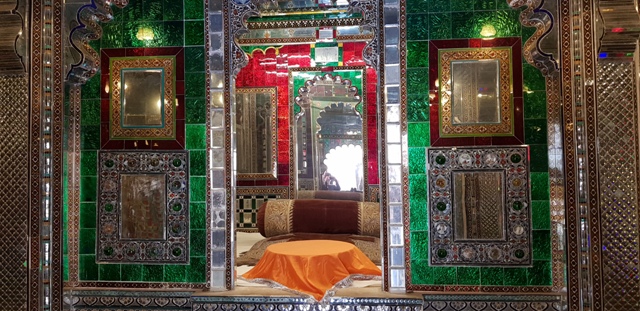
‘Beyonce, the best singer in the world, sang here for the wedding of Mukesh Ambani’s daughter,’ I overheard a tour guide tell some Tamil tourists, an ennui-stricken group which became suddenly agog with the revelation. Their dissent was legit – there couldn’t be a singer greater than their own homegrown crop. We were in the City Palace which lay towards the east of the lake. Couldn’t blame him as it was hyperbole that kept the romance alive. It permeated architecture, historical interpretations, backgrounds of rulers, love stories of the dwellers, deaths of queens, victories, sorrows, statesmanship, simple fate and warfare. The exhibit I liked most was Chetak – the war horse with fake trunks attached to it to make it look like an elephant, which rode its master to safety in battle and died soon after. Even though the name was attributed to it in later, popular literature, I was happy that we had our own Hidalgo.
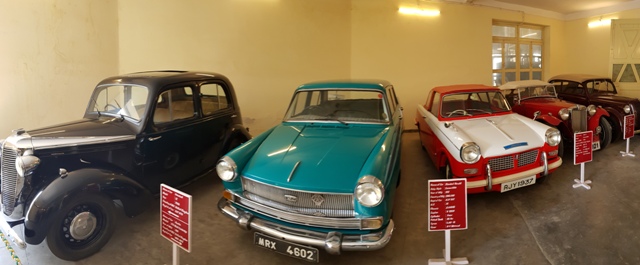
A little over a kilometre away was the vintage car museum which wasn’t worth the entry price; the Geedee Museum in Coimbatore had probably spoilt me, definitely raised the bar. To make a point I asked the watchman if the advertised ‘pure veg’ Rajasthani thali was included in the ticket and he offered to take my photograph in the buggy instead. Across the street was the garden with the quaint miniature castle called the Sajjan Niwas, today a public library. Youngsters were bent over thickly bound tomes, like the one I saw with the hotel owner’s wife, hustling away, future bureaucrats. As I inspected the statue of Gandhi – which replaced the one of Queen Victoria after Independence – I saw in the bushes behind a chap skunked, flies buzzing the bile that continued to froth out. I wondered what aftermath of a test it would be.
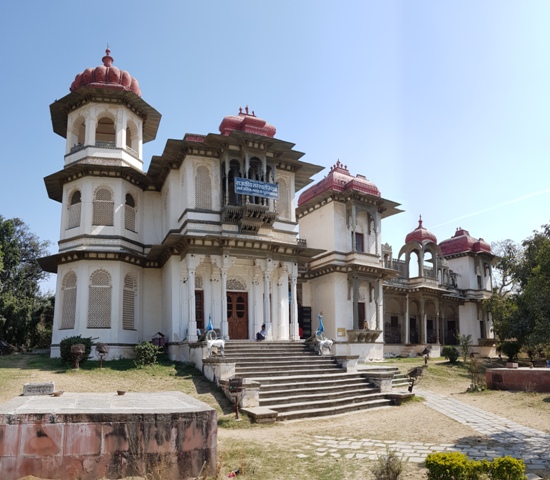
From the library, it is a longish walk through a scanty park to the main road with many resting shelters. In one I saw a family of self-flagellating nomadic tribe I met earlier. While the men were oiling their whips, one woman breast-fed a baby and another laid out food retrieved from discarded food delivery app covers. Technology aiding freegans. I made conversation while breaking for a smoke and one showed me a photograph – it was of his with actor Salman Khan. Khan wielded the bulbously knotted rope in the photograph while he glowed, looking incredibly happy. In some local unfathomable dialect he went on for sometime which I am sure the actor would have been happy to be privy to. Self-flagellation has religious origins originally meant to chastise the body. But these nomads had developed it to an art where the body remains largely intact while the whip cracks like thunder. Their cord-hard bodies are tempered further by their peripatetic lives but these guys showed me dark-blue spots – concussions where sleight of hand slipped.
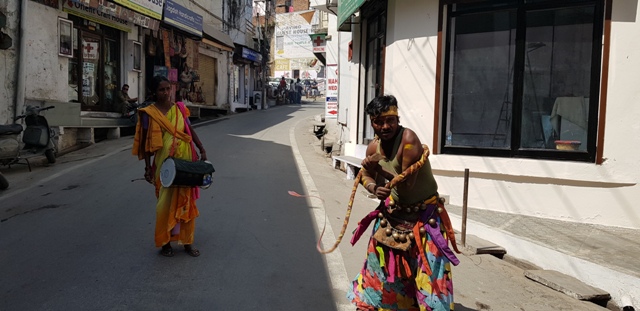
A little zapped of energy by now from the afternoon sun and having to ride out tomorrow, I decided to take an auto rickshaw back to Pichola. While I waited for a boat to go the temple, the Jag Mandir, on an island in the lake, I met Ghansiram. Dressed in a traditional pagari and white safari shirt and of a proud mien, Ghansiram hailed from a family of musicians who played, made and sold ravanahatha. This stringed, bowed instrument is believed to be a precursor to the violin and is named after the much-vilified demon king Ravan. While ten of his heads are burned elsewhere in the country to denote the end of evil, here, I marvelled, was a musical instrument named after him.
“The instrument syncs well with the voice of the singer, any kind of voice,” Ghansiram said and riffed from popular folk ‘Kesariya balam’.
“You could almost hear Lata Mangeshkar singing, right?” He asked afterwards.
His boat came which would ferry him to a popular island hotel where he played in the evenings and I hired one to the Jag Mandir. The runagate Prince Khurram – who would later become Shah Jahan – hid here following a fallout with his father Jahangir. Probably because Mumtaz too was with him, it is believed that the Jag Mandir inspired the architecture of the Taj Mahal later on. Whether there are similarities or not, the fact remains that following this hideout act, a much-needed peace prevailed between the Mughals and the Mewar rulers till Marathas became the marauders.
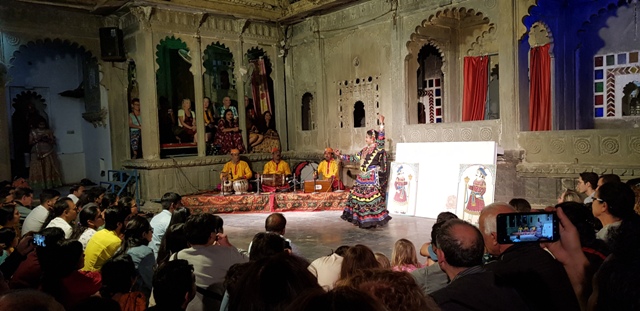
Back at the Gangaur Ghat, I met some travellers I had befriended at the German Bakery. The online ticketing to watch the culture show ‘Dharohar’ at the Bagore Ki Haveli wasn’t working, they complained. We decided to buy our tickets the old fashioned way – sipping tea and comparing notes standing in the queue. The haveli was a property of the state and while earnest efforts were on to retain some of its earlier glory as a palace with over 100 rooms, it had begun to resemble the set in a bottle episode of a historical series. The numen was fading however brightly we repainted the murals in the cupola.
The lights dimmed and the Kalbeliyas sashayed on to the stage, missing cobras relived in their writhing moves.

